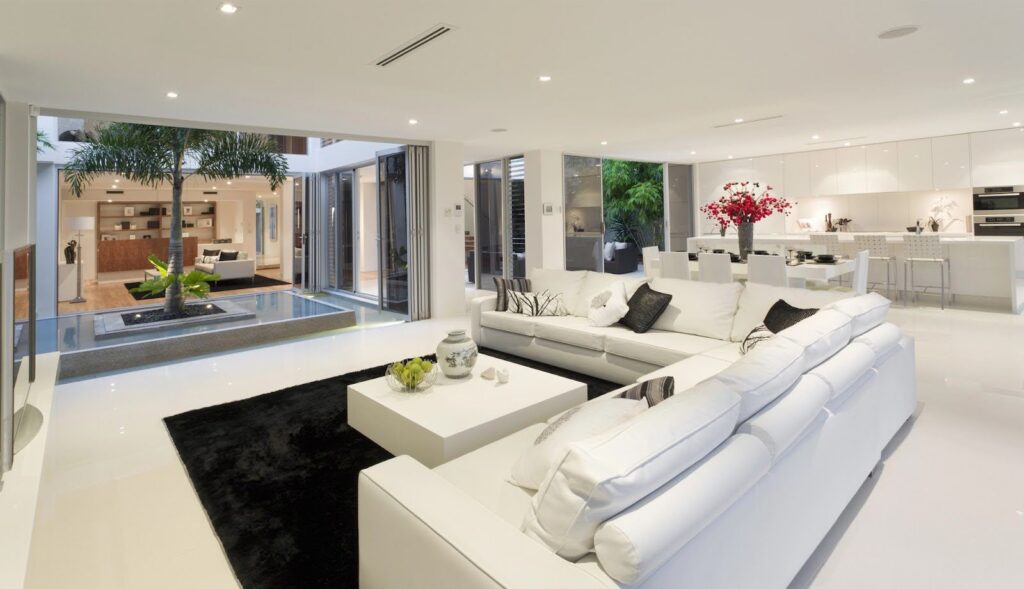We live in a fast-paced, technologically advanced world, where every aspect of our lives is interconnected with technology. However, the fundamental need for household lighting remains constant. The vitality of efficient lighting is beyond illuminating spaces. It also influences our monthly energy costs and plays a substantial role in energy conservation. An average Australian household spends several hundred dollars annually on home lighting alone which forms a sizable chunk of the overall electricity bill.
Therefore, it is imperative to acknowledge the impact of our domestic lighting choices on both our household budget and the broader environment. This article seeks to build an understanding of efficient lighting practices and offers top tips for saving money on lighting.
The Real Impact of Your Current Lighting
Home lighting goes beyond an on-and-off switch. The type of lamps and bulbs used in homes significantly impact overall energy consumption. Traditional lighting solutions, such as incandescent and halogen lamps, are notorious energy consumers.
Despite their cheaper upfront cost, these high wattage lamps can quickly skyrocket your electricity bills. A rough estimation indicates that around 10% of a household’s total energy bill is solely spent on lighting. This impact on the domestic budget is substantial, stripping households of valuable monetary savings.
Moreover, the environmental footprint of excessive energy consumption is equally worrying. More energy consumption means more burning of fossil fuels, leading to an increase in greenhouse gas emissions. This clarifies that an eco-friendly and efficient lighting system possesses a two-pronged advantage—it conserves your hard-earned money and contributes towards a safer environment.
Maximising Natural Light at Home
An eco-friendly and cost-effective lighting strategy is to optimise the use of natural light. Utilising sunlight to illuminate homes significantly curtails the need for artificial lighting during daylight hours. Additionally, it conveys a plethora of health benefits. Sunlight, for instance, is a natural source of Vitamin D, which is known to boost mood and overall health.
The extent of natural light permeating your home depends on the size and position of your windows. Window films, mirrors, and strategically positioned light shelves can help control and enhance the light pouring inside. Another straightforward method is to utilise lighter paint shades for walls, ceilings, and floors to reflect sunlight better and create a brighter indoor environment.

The Revolution of LED Lighting
LED (Light Emitting Diode) lighting technology is revolutionising the world of domestic lighting. These lights utilise minimal energy compared to traditional incandescent and halogen bulbs, thereby significantly curbing annual lighting costs.
Investing in LED lighting might seem expensive initially, but the long-term savings outweigh the upfront cost. These bulbs produce the same amount of light for a fraction of the energy, lowering the electricity bills substantially over time.
LED lights’ longevity is another pro-mark that goes beyond cost-effectiveness. These bulbs tend to have a longer lifespan, meaning less frequent replacements and fewer disposal problems. Moreover, with respect to the environment, LEDs don’t contain hazardous materials like mercury and discharge fewer greenhouse gases, making them a sustainable choice.
Lighting Controls and Sensors: Modern Day Boon
Today’s advanced technological world offers solutions to optimise lighting usage further—introducing lighting controls and sensors. These devices automatically adjust your home’s lighting based on factors like human presence, time of day, or the level of natural light.
Automatic controls like dimmers, timers, motion detectors, and daylight sensors can significantly help reduce unnecessary energy consumption. They allow for shades of illumination, automate switching lights on and off, and even controlling lights when the natural light is sufficient. This not only results in considerable savings on your electricity bill but also adds to the convenience factor where you won’t need to remember to turn off the lights.
Smart Tips to Remember When Purchasing Lighting Equipment
When purchasing energy-efficient light bulbs, understanding their energy ratings is crucial. A booking with more stars indicates it is more energy efficient. Other factors to take note of are the wattage, lumens, colour temperature, and lifespan of the bulbs.
Moreover, using lighting correctly helps extend its lifespan and improve efficiency. This includes habits like switching off lights when not in need or using task lighting instead of whole-room lighting when possible. Apart from this, many government initiatives promote the use of energy-efficient lighting by providing various incentives.
Conclusion
Adopting energy-efficient and eco-friendly lighting practices is an effective way to conserve both money and energy. Implementing these strategies may seem overwhelming, so don’t hesitate to get in touch with a certified electrician to assist you in making these transitions efficiently.
Always remember, your personal experiences could be invaluable to others, so go ahead and share your energy-efficiency lighting experiences and ideas. Building homes that prioritise sustainability and energy efficiency is crucial in today’s world. Let’s do our part to foster a better future for all.






